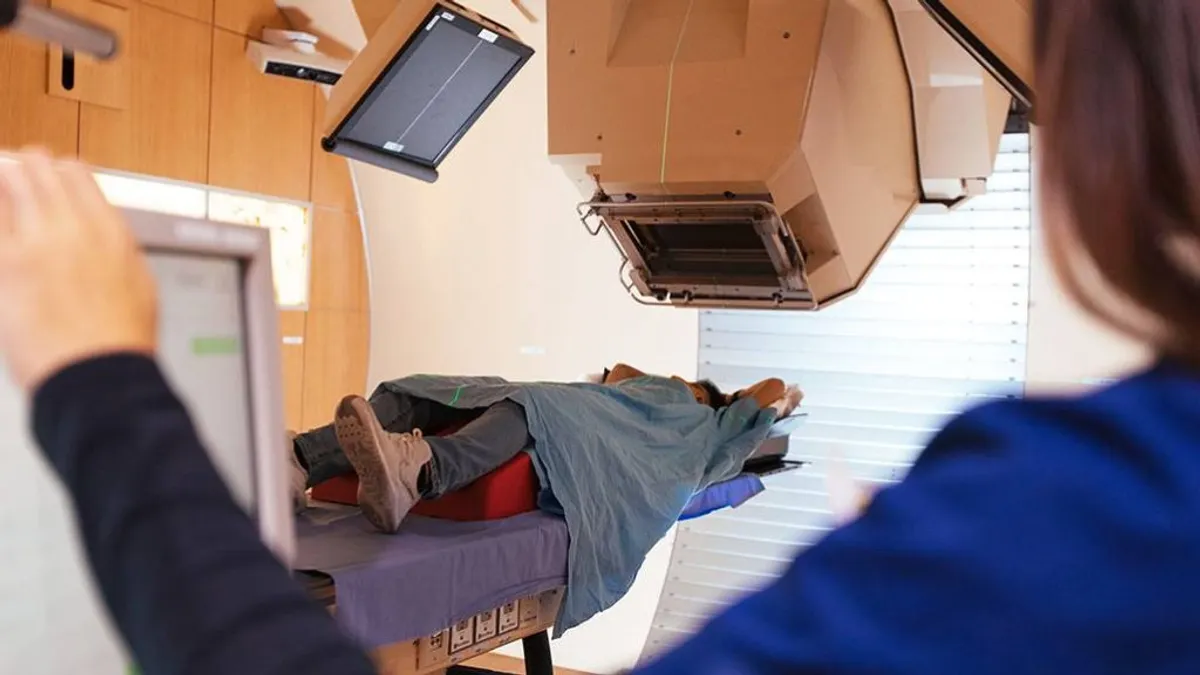The CMS will soon make it more difficult for providers in six states to get reimbursed in Medicare for certain medical procedures it has deemed “low value,” but some stakeholders worry it could lead to worse healthcare access and quality.
Doctors in a select group of states will be required to secure artificial intelligence-powered prior authorization for some services in traditional Medicare as part of a new CMS pilot program, dubbed the Wasteful and Inappropriate Service Reduction, or WISeR, model. The program has lawmakers, provider groups and experts worried it could harm healthcare access, reduce care quality and increase the administrative burden on providers.
Prior authorization requires providers to obtain pre-approval for certain procedures, medications, devices or other healthcare-related products and services. Insurers claim it reduces unnecessary medical care and helps manage costs.
However, traditional Medicare only requires prior authorization under limited circumstances. Prior authorization has drawn scrutiny from the federal government for delaying or preventing necessary medical care and jeopardizing health outcomes, especially in Medicare Advantage plans.
In recent weeks, Democratic lawmakers have sent at least two letters to CMS Administrator Dr. Mehmet Oz, urging the agency to halt the pilot program and demanding more information about how the agency plans to protect beneficiaries and providers.
“The expansion of AI-fueled prior authorization will not improve program integrity in Traditional Medicare,” 42 Democratic members of Congress said in a July 31 letter. The pilot program “opens the door to further erosion of our Medicare system.”
WISeR aims for cost savings
The CMS’ Center for Medicare and Medicaid Innovation, also known as the CMS Innovation Center or CMMI, develops and tests healthcare payment and service delivery models to improve patient care, lower costs and align payment systems. It’s the driving force behind federal efforts to transition the U.S. healthcare system from fee-for-service reimbursement to value-based care.
Under the WISeR model, CMMI will contract with private companies, including Medicare Advantage plans, to pilot AI-powered prior authorization for low-value care, which are “services that provide little or no benefit to patients, have potential to cause harm, incur unnecessary cost to patients, or waste limited healthcare resources,” according to a 2019 systematic review published in Journal of General Internal Medicine. The pilot affects traditional Medicare services in six states: Arizona, New Jersey, Ohio, Oklahoma, Texas and Washington.
It aims to reduce healthcare spending by curbing medically unnecessary care, which the CMS said cost it up to $5.8 billion in 2022.
The new model’s approach is consistent with the agency’s renewed emphasis on managing costs, experts said.
The CMMI’s current focus on cost savings is a pivot from the Biden administration, which focused on improving care quality in models, partly because it’s challenging to achieve net cost savings and expand a pilot model under the Affordable Care Act, which created the innovation center.
But the WISeR model has the potential to be expanded, said Amy Bassano, former deputy director at CMMI and managing director for Medicare at Health Management Associates.
Bassano said the WISeR model builds upon past successful pilot programs, including the non-emergency transport model, “which was certified and expanded under the Innovation Center authority after Congress stepped in and directed the agency to do it. So there is precedent there.”
The model is mandatory
Unlike other CMMI demonstrations, providers in the test model’s six states are required to participate in the WISeR model, which will take effect in January and run through 2031.
To receive payment, providers and suppliers serving individuals with traditional Medicare in covered regions will have to submit a prior authorization request or undergo a post-service and pre-payment medical review, according to a CMS fact sheet.
A licensed clinician will review all claim denials, per the fact sheet.
However, despite the safeguards, the mandatory model has drawn the ire of provider groups who oppose prior authorization, including the Medical Group Management Association.
“The WISeR model is a misguided effort, and the expansion of prior authorization in traditional Medicare will only exacerbate administrative burden for practices and risk delays in patient care,” Anders Gilberg, SVP of government affairs at the MGMA, said in an email. “Prior authorization continually ranks as the number one administrative burden facing medical groups, and one of the hallmarks of traditional Medicare has been the ability for physicians, not government, to determine what’s clinically appropriate for their patients.”
Covered providers may also be unprepared for the model when it takes effect because they are not direct participants (the CMMI will contract directly with companies that provide prior authorization) and may not understand that it affects them, said Phoebe Ramsey, a former CMMI official and director of physician payment and quality for the Association of American Medical Colleges.
However, there’s a potential silver lining for accountable care organizations in the affected states, Ramsey said, as the WISeR model’s prior authorization requirement “might hold back some wasteful or fraudulent spending” that ACOs are responsible for.
That could lead to greater cost savings, as CMMI’s reform efforts actually increased direct spending by $5.4 billion, or about 0.1% of net Medicare spending, between 2011 and 2020, according to a report from the Congressional Budget Office.
Is the WISeR model a ‘slippery slope’?
The WISeR model requires prior authorization for services including skin and tissue substitutes, electrical nerve stimulator implants, and knee arthroscopy for the treatment of knee osteoarthritis. The treatments have been deemed by the CMS to be potentially wasteful, have other available coverage or pose safety concerns if delivered inappropriately.
Inpatient-only services, emergency services and other time-sensitive care are excluded because there’s a higher risk that prior authorization requirements would lead to the delay or denial of necessary medical care.
As part of its mission to accelerate the movement toward value-based care, CMMI should focus on curbing low-value care because it’s wasteful and in some cases could actually harm Medicare beneficiaries, said Liz Fowler, former deputy administrator and director of the Innovation Center at the CMS, co-founder and managing partner at consultancy Health Transformation Strategies, and a distinguished scholar at Johns Hopkins University’s Bloomberg School of Public Health.
But some Democrats and providers worry CMMI will expand the model to cover more services in the future. Overuse of prior authorization could lead to the denial of necessary medical care, as has happened in Medicare Advantage, experts say.
“This could be a slippery slope,” Gilberg said.
But those concerns shouldn’t prevent the agency from using innovative approaches to reduce low-value care in traditional Medicare or curb the improper use of prior authorization in Medicare Advantage, Fowler said.
The agency should be able to “walk and chew gum” at the same time, Fowler said. “But let’s move carefully and not expand so quickly to the point that we’re concerned about access to needed services.”
Transparency and oversight concerns
Democrats, providers and other stakeholders are also concerned about a potential lack of transparency and oversight. In their July letter, Democratic members of Congress said a lack of technical transparency about how AI-powered prior authorization solutions make decisions would make it difficult for the CMS to ensure adequate program and model oversight.
The CMS must ensure that participants, such as MA plans, are following traditional Medicare’s national and local coverage determinations, Bassano said.
“CMS should know what it is buying, or contracting for, from these model participants,” Bassano said.
Stakeholders are also concerned about financial incentives that could encourage model participants, such as commercial insurers or technology vendors, to deny necessary medical care to boost profits. Under the WISeR model, contracted entities will earn shared savings by restricting services.
The WISeR model “will reward AI bounty hunters,” Gilberg said.
“While CMMI claims the percentage will be adjusted based on certain performance measures, including provider experience, fundamentally, AI vendors will still need to deny requests in order to profit in the program,” he said.
There are also many unanswered questions about how the model will function in practice and in conjunction with other CMS policies, such as its proposed elimination of the inpatient-only list. But CMS will likely provide the “additional information in good time,” as it usually does, Bassano said.
The agency will also evaluate what’s working and what isn’t, and make changes if the WISeR model isn’t working as intended, which is “the nature of a CMS model,” Bassano said.
“There’s a learning curve on both sides whenever new models are launched, especially something as novel as this,” Bassano said. “It’s always just a matter of keeping communication open, and CMS generally wants to hear those things.”





















